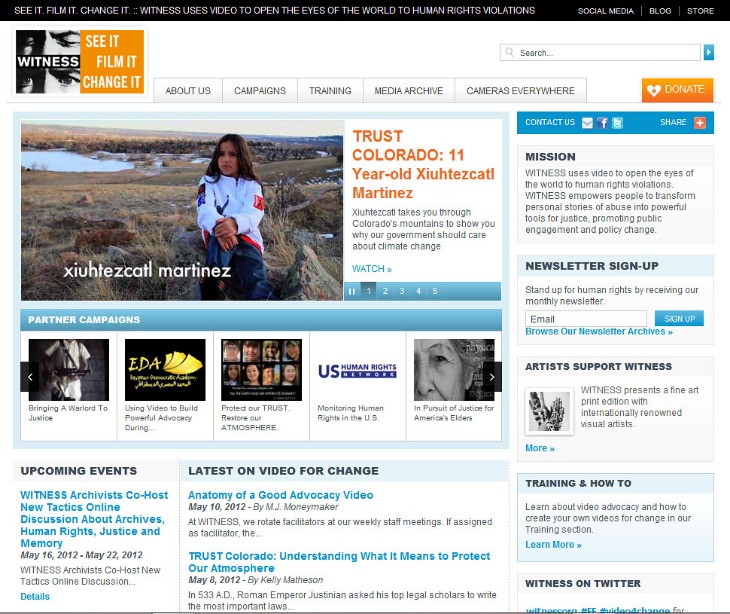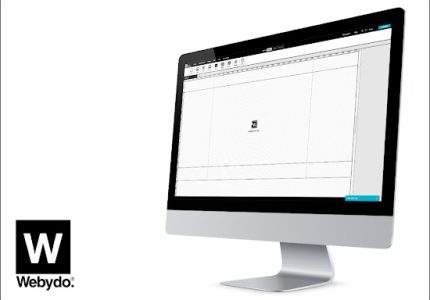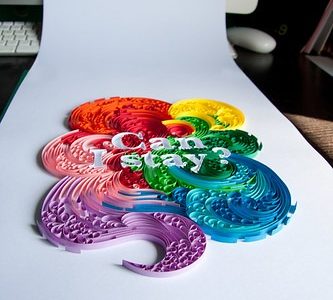Analyzing Monthly Website Design Trends
Analyzing monthly website design trends provides valuable insights into the evolving aesthetics and functionality preferences within the digital landscape. By examining these patterns, designers and businesses can stay ahead of industry changes, creating more engaging and user-friendly websites. Understanding current trends helps in identifying innovative approaches and adapting to user expectations effectively each month.
Overview of Trending Styles
Analyzing monthly website design trends reveals a dynamic landscape where aesthetics and functionality continuously evolve to meet modern user expectations. Each month, designers experiment with new styles, color schemes, and interactive elements, reflecting broader cultural and technological shifts. Staying updated on these trends enables website creators to maintain relevance and deliver engaging user experiences.
Currently, trending styles include minimalistic designs emphasizing clean layouts and ample white space, which enhance readability and focus. Bold typography continues to be popular, making statements and guiding user attention effectively. Additionally, vibrant color palettes are making a comeback, adding energy and personality to websites. Dynamic and interactive elements, such as micro-animations and scroll-triggered effects, are increasingly used to make navigation more engaging. Grid-based layouts and asymmetrical designs are also gaining traction, offering unique visual interest while maintaining usability. Overall, these emerging styles underscore a shift towards user-centric, visually appealing websites that prioritize both form and function.
Influence of Industry Developments
Analyzing monthly website design trends reveals the dynamic nature of the digital landscape and how industry developments continually shape user interfaces and aesthetics. Each month, new design patterns emerge, influenced by technological advancements, consumer preferences, and shifting industry standards. For instance, the integration of more immersive experiences like micro-interactions and motion graphics reflects a broader trend towards engaging and interactive websites.
Industry developments such as the adoption of artificial intelligence, progressive web apps, and mobile-first indexing significantly impact design choices. These innovations drive the demand for responsive, fast-loading, and user-centric interfaces, resulting in a focus on minimalism, accessibility, and personalization. Monitoring these trends monthly allows designers to stay ahead of competitors by incorporating the latest features and visual styles that resonate with evolving user expectations.
Furthermore, industry shifts influence the adoption of specific color schemes, typography styles, and layout structures. For example, the increase in dark mode popularity has prompted designers to optimize for energy efficiency and visual comfort. Overall, analyzing the monthly trends in website design provides valuable insights into how industry developments steer creative directions and technical implementations across digital platforms.
Popular Color Schemes and Palettes
Analyzing monthly website design trends provides valuable insights into the evolving aesthetics and user preferences in digital spaces. Each month, designers experiment with new styles, layout techniques, and interactive elements to enhance user engagement and visual appeal.
Popular color schemes and palettes play a crucial role in shaping the overall look and feel of websites. Currently, trends favor soft pastels combined with bold accent colors to create a balanced and modern appearance. Monochromatic palettes are also popular, offering a clean and cohesive aesthetic. Additionally, vibrant gradients continue to be favored for their dynamic and eye-catching qualities, providing depth and movement across web pages.
Staying updated with these monthly trends ensures that website designs remain fresh, relevant, and effective at capturing visitors’ attention. Incorporating trending color schemes and design elements allows brands and developers to communicate their message compellingly while maintaining a contemporary look.
Key Components of Monthly Design Updates
Monthly website design updates are essential for maintaining an engaging and effective online presence. These updates typically focus on several key components that ensure the website remains visually appealing, functional, and aligned with current trends and user needs. Regular improvements help enhance user experience, optimize performance, and reflect brand growth, making it crucial for successful website management.
Typography and Font Choices
Key components of monthly design updates often include refining typography and font choices to enhance readability and visual appeal. Consistent typography ensures a cohesive user experience, while variations can highlight important content or seasonal themes. Selecting appropriate fonts involves balancing style, readability, and brand identity, often updating font sizes, line spacing, and weights to adapt to new content or design trends. Regularly reviewing and adjusting typography helps maintain a modern, accessible, and engaging website appearance aligned with the overall design strategy.
Navigation Enhancements
Monthly website design updates focus on maintaining a dynamic and user-friendly digital presence through key components such as navigation enhancements and visual improvements. These updates aim to improve user experience, ensure consistency, and incorporate the latest design trends. Navigation enhancements involve streamlining menu structures, introducing intuitive interfaces, and optimizing mobile responsiveness to facilitate easier access to content across devices. Visual improvements may include updated color schemes, improved typography, and refined layout elements to keep the website visually appealing and aligned with current branding standards. Consistent and incremental updates help retain user engagement while addressing usability and aesthetic goals in a systematic manner.
Visual Elements and Graphics
Effective monthly website design updates rely on clear communication of progress and improvements through visual elements and graphics. These components help stakeholders easily understand the changes made and ensure consistency across the website’s aesthetic and functionality.
Key components of visual elements and graphics in monthly design updates include:
- High-quality screenshots illustrating before-and-after comparisons
- Mockups and wireframes demonstrating proposed layout changes
- Infographics summarizing key metrics or features added during the month
- Color palettes and typography samples to showcase branding updates
- Interactive prototypes for testing new features and user flows
- Icons and illustrations enhancing visual storytelling
- Animations or motion graphics highlighting dynamic design elements
Responsive Design Adjustments
Responsive design adjustments are essential for creating a seamless user experience across various devices and screen sizes. As part of monthly website design updates, these adjustments ensure that your site remains visually appealing and functional, whether viewed on a desktop, tablet, or smartphone. Incorporating flexible layouts and adaptive elements helps maintain consistency and accessibility, enhancing overall engagement and satisfaction for visitors.
Mobile Optimization Strategies
Monthly website design involves implementing responsive design adjustments and mobile optimization strategies to ensure a seamless user experience across all devices. By regularly updating layouts and features, designers can adapt to evolving screen sizes and user behaviors, enhancing site accessibility and engagement. Responsive design adjustments typically include flexible grid layouts, scalable images, and media queries that allow the website to automatically resize and reorganize content based on the device’s screen dimensions.
Mobile optimization strategies focus on improving load times, touch-friendly navigation, and simplified content to cater to users accessing the site via smartphones and tablets. Techniques such as minimizing code, compressing images, and leveraging browser caching contribute to faster performance on mobile devices. Additionally, prioritizing essential content and streamlining user interface elements can improve usability and encourage longer interactions, ultimately supporting the objectives of a dynamic, month-by-month website redesign approach.
Cross-Device Compatibility
Monthly website design involves continuously refining and updating the website to enhance user experience across various devices. Responsive design adjustments are essential to ensure that content displays properly on different screen sizes, from desktops and laptops to tablets and smartphones. Utilizing flexible grids, scalable images, and media queries helps create a seamless viewing experience regardless of the device used. Cross-device compatibility ensures that features, navigation, and interactive elements function consistently, providing users with a unified and accessible interface. Regular testing across multiple devices and browsers allows designers to identify and address any issues, maintaining an optimal and user-friendly website each month.
Performance Improvements
Monthly website design updates should prioritize responsive design adjustments to ensure optimal viewing experiences across various devices. This involves using flexible grids, scalable images, and media queries to adapt layouts seamlessly. Additionally, performance improvements play a crucial role in enhancing user engagement and reducing bounce rates. Techniques such as optimizing images, leveraging browser caching, and minimizing code bloating help speed up load times. Regularly testing the website on different screen sizes and devices ensures that design and performance enhancements work effectively, delivering a consistent and efficient user experience each month.
Incorporating User Feedback and Analytics
Incorporating user feedback and analytics is essential for creating a successful monthly website design. By actively listening to user preferences and analyzing behavioral data, designers can make informed decisions that enhance usability, engagement, and overall user satisfaction. This continuous improvement process ensures that the website remains relevant, intuitive, and aligned with the evolving needs of its audience. Integrating these insights into the design cycle is key to achieving sustained success and growth each month.
UI/UX Improvements Based on Data
Incorporating user feedback and analytics plays a vital role in driving monthly website design improvements. By analyzing data collected through user interactions, behavior patterns, and feedback forms, designers can identify pain points and opportunities for enhancement. This iterative process ensures the website remains user-centric, addressing the evolving needs and preferences of visitors. Regularly updating UI/UX based on these insights leads to a more intuitive and engaging user experience, ultimately increasing user satisfaction and conversion rates.
Accessibility Enhancements
Incorporating user feedback and analytics is essential for continuous improvement of monthly website design. By actively analyzing user interactions and gathering their insights, designers can identify what features or layouts resonate most effectively. Accessibility enhancements ensure the website remains usable for all visitors, including those with disabilities, thereby expanding reach and compliance.
- Regularly review analytics data to identify popular content and areas where users drop off.
- Collect user feedback through surveys, comment sections, or direct outreach to understand their needs and preferences.
- Prioritize accessibility features such as keyboard navigation, screen reader compatibility, and adjustable text sizes in the design updates.
- Implement iterative design changes based on feedback and performance metrics to create a more intuitive and inclusive user experience.
- Test accessibility improvements with real users or experts to ensure they effectively address diverse needs.
Personalization Features
Incorporating user feedback and analytics is essential for enhancing monthly website design, ensuring that the platform remains relevant and engaging for users. By analyzing user interactions and feedback, designers can identify areas for improvement and tailor features to better meet user needs. Personalization features further improve user experience by delivering content and functionalities tailored to individual preferences.
- Gather user feedback through surveys, comments, and direct interactions to understand their needs and expectations.
- Utilize analytics tools to track user behavior, page visits, and engagement metrics for data-driven insights.
- Implement personalization features such as customized content recommendations, user-specific dashboards, and adaptive layouts based on user preferences.
- Regularly update the website design monthly by applying insights gained from feedback and analytics to introduce relevant features and improvements.
- Test new personalization options with a segment of users to evaluate effectiveness before wider deployment.
Tools and Technologies for Monthly Design
Effective monthly website design relies on a wide range of tools and technologies that streamline the creative process and ensure high-quality results. These tools facilitate various aspects of design, from wireframing and prototyping to collaboration and version control. Staying updated with the latest technologies enables designers to create visually appealing, responsive, and user-friendly websites that meet evolving digital trends.
Design Software Updates

Effective monthly website design relies on a combination of innovative tools and up-to-date software to ensure constantly refreshed and visually appealing interfaces. Utilizing industry-standard design software such as Adobe XD, Figma, and Sketch allows designers to create, iterate, and collaborate efficiently on new layouts and features. These tools support real-time collaboration, version control, and prototyping, which are essential for fast-paced monthly updates. Additionally, graphic design programs like Adobe Photoshop and Illustrator help craft high-quality visuals and icons that enhance overall aesthetic appeal.
Keeping design software current is crucial for leveraging new functionalities and improvements. Regular updates from software developers introduce advanced features, bug fixes, and improved interoperability, which streamline the design process. Teams often adopt automated workflows and integrations with project management tools like Slack, Trello, or Jira to coordinate updates seamlessly. Moreover, utilizing version control systems and cloud-based storage ensures that design assets are securely stored and easily accessible across the team, facilitating efficient monthly design cycles.
CMS and Framework Updates
Implementing effective tools and technologies for monthly design updates, content management systems (CMS), and framework enhancements is essential for maintaining a dynamic and engaging website. Utilizing version control systems like Git ensures seamless tracking of design changes and collaborative development. Content management platforms such as WordPress, Drupal, or Joomla enable efficient content updates and theme customization on a regular basis. Frameworks like Bootstrap, React, or Angular can be leveraged to update the website’s structure and functionality with the latest features and security patches. Additionally, design tools such as Adobe XD or Figma facilitate creating fresh visual concepts that align with ongoing content updates. Automated deployment tools like Jenkins or GitHub Actions can streamline the process of rolling out monthly enhancements, ensuring minimal downtime and consistent performance. Regularly reviewing and integrating updates from these technologies helps maintain a modern, responsive, and user-focused website experience.
Automation and A/B Testing Tools
Effective monthly website design relies on a range of tools and technologies that facilitate seamless updates, automation, and data-driven improvements. Design tools like Adobe XD, Figma, and Sketch enable teams to create and iterate on visual layouts efficiently, ensuring consistent branding and user experience. Automation tools such as Zapier, Integromat, and custom scripts streamline repetitive tasks like content updates, data synchronization, and deployment processes, saving time and reducing errors. For testing and optimization, A/B testing platforms like Optimizely, VWO, and Google Optimize allow marketers to compare different design variants to determine the most effective elements for user engagement. Additionally, version control systems like Git help manage changes to design assets and code, supporting collaborative workflows. Combining these tools supports a structured, data-backed approach to monthly website updates, enhancing both usability and performance.
Case Studies of Recent Monthly Design Changes
Exploring recent monthly design changes provides valuable insights into how websites adapt to evolving trends, user preferences, and technological advancements. Case studies highlighting these updates reveal the strategic decisions behind aesthetic improvements, usability enhancements, and functional overhauls. By examining these ongoing modifications, developers and designers can better understand effective practices and future directions in monthly website design updates.
Case Study 1: E-commerce Website
Case Study 1: E-commerce Website
Over the past few months, the e-commerce website implemented a series of monthly design updates aimed at enhancing user experience and boosting sales. In the first month, a minimalist redesign was introduced to simplify the homepage, prominently featuring high-quality product images and streamlined navigation menus. The second month focused on improving mobile responsiveness, ensuring the site delivered a seamless shopping experience across all devices. During the third month, the checkout process was optimized by reducing the number of steps and adding progress indicators, which resulted in higher conversion rates. Each monthly change was supported by user feedback and analytics data, allowing continuous refinement. These iterative design updates exemplify how monthly adjustments can effectively respond to evolving user needs and technological trends, ultimately leading to increased user engagement and sales growth for the e-commerce platform.
Case Study 2: Portfolio Website
Case Study 2: Portfolio Website demonstrates the impact of consistent monthly design updates on user engagement and overall aesthetic appeal. Over several months, the website underwent targeted modifications focusing on layout optimization, visual hierarchy, and interactive elements. Each month’s changes were driven by user feedback and analytics data, allowing for iterative improvements that enhanced usability and visual consistency. The redesign process included refining navigation menus, enhancing portfolio item presentation, and introducing subtle animation effects to create a more engaging experience. As a result, the website saw increased visitor retention and higher interaction rates, illustrating how incremental monthly design changes can effectively evolve a digital portfolio to meet evolving user expectations and industry standards.
Case Study 3: Corporate Website
Case Study 3 explores the recent monthly design updates implemented on a corporate website to improve user experience and branding consistency. These incremental changes demonstrate the company’s commitment to staying current and engaging visitors effectively.
- The first month focused on refreshing the homepage layout, introducing a cleaner navigation menu and updated hero images to make the site more inviting.
- The second month involved optimizing mobile responsiveness, ensuring that the design adapts seamlessly across various devices, which led to increased mobile engagement.
- The third month saw the addition of interactive elements such as dynamic CTAs and subtle animations to enhance user interaction without overwhelming visitors.
- In the fourth month, typography was refined to improve readability and reflect the company’s modern brand identity, complemented by a color palette update.
- The latest month focused on accessibility improvements, including better contrast ratios, alt text for images, and keyboard navigation, broadening the website’s reach.
Overall, these monthly design revisions have gradually refined the corporate website, aligning its visuals and functionality with evolving user preferences and technological standards, ensuring sustained engagement and brand relevance.
Future Outlook on Website Design Trends
The future outlook on website design trends promises a dynamic and innovative landscape driven by evolving user preferences and technological advancements. Each month, new styles and features emerge, shaping how brands and businesses present themselves online. Staying ahead of these trends is essential for creating engaging, functional, and visually appealing websites that resonate with modern audiences.
Emerging Technologies
The future outlook on website design trends highlights a continual evolution driven by emerging technologies and user preferences. As digital engagement becomes more sophisticated, designers are increasingly focusing on creating personalized, immersive experiences that captivate visitors and enhance usability. Advancements in artificial intelligence, machine learning, and augmented reality are pushing the boundaries of conventional web design, enabling more dynamic and interactive interfaces.
Emerging technologies such as voice user interfaces, 3D graphics, and real-time data integration are poised to become standard features in monthly website updates. Web designers are also prioritizing accessibility and mobile-first approaches, ensuring websites cater to a diverse global audience. The trend toward minimalistic and visually appealing designs remains strong, complemented by the integration of motion graphics and micro-interactions to improve engagement.
In the future, website design will increasingly leverage automation, responsive layouts, and adaptive content to provide seamless experiences across devices. As technology continues to advance, the focus will shift towards creating more personalized, efficient, and aesthetically compelling websites that meet the evolving expectations of users worldwide. Regular updates driven by these innovations will ensure websites remain relevant, accessible, and engaging with each monthly iteration.
Predicted User Preferences
The future outlook on website design trends suggests a continued emphasis on user-centric experiences, combining aesthetic appeal with seamless functionality. As technology advances, designers are increasingly prioritizing personalization and accessibility to cater to diverse user preferences. Minimalist layouts, clean typography, and vibrant color schemes are expected to remain popular, creating visually engaging yet straightforward interfaces.
Predicted user preferences indicate a growing demand for immersive and interactive features, such as micro-interactions, animated elements, and responsive designs that adapt effortlessly across devices. Users are also seeking faster load times, enhanced security, and intuitive navigation, which influence the evolution of website features. Additionally, there is a rising interest in eco-friendly and sustainable design practices, reflecting broader societal values. Overall, future website designs aim to balance aesthetics with functionality, ensuring an engaging and accessible experience for all users.
Integration of AI and Machine Learning
The future outlook of monthly website design trends is increasingly shaped by the integration of AI and machine learning, transforming how websites are created and experienced. These technologies enable dynamic customization, enhanced user interactions, and predictive analytics, allowing designers to tailor content and interfaces to individual user preferences in real-time. As AI tools become more sophisticated, we can expect automation of routine design tasks, such as layout adjustments and content generation, freeing designers to focus on more creative aspects. Additionally, machine learning algorithms will improve website accessibility and usability by analyzing user behavior and adjusting elements accordingly. This ongoing innovation promises a more personalized, efficient, and engaging web experience, making AI and machine learning central to the evolution of monthly website design strategies.





